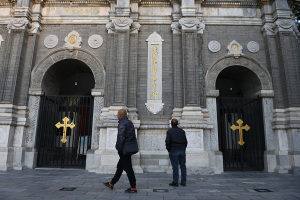Super Blue Blood Moon News: What is the January 31 Trifecta of Lunar Occurrences About?
Three individual lunar occurrences are happening all at once on January 31, making it one event that does not happen very often.
Dubbed as the "super blue blood moon," the rare event will feature a trifecta of interactions the moon has with the earth and the sun. With the blue moon, super moon, and blood moon happening all at the same time, there is no denying that the evening of January 31 this year is a date worth anticipating.
To the uninitiated, the term "blue moon" has nothing to do with the color of the celestial body. The term is used in reference to a calendar month having two full moons, which only happens every 2.7 years. As January 2018 already had its first full moon on the first day of the year, and will have its second one on January 31, hence, the blue moon.
Super moon, on the other hand, happens when the the moon is closest to earth during a full moon. It is during this time when the moon appears slightly bigger and brighter than the usual full moon, roughly 30 percent brighter and 14 percent bigger. Despite the increase in its size and brightness, the difference it has with a regular full moon is hard to notice unless someone is a careful moon-watcher, experts claim.
Meanwhile, blood moon is the term used in reference to the color of the moon as it undergoes a total lunar eclipse. While the term is not scientific, it aptly describes the coppery-reddish glow of the celestial body during an eclipse.
The change in the color of the moon during a total lunar eclipse is due to the fact that it does not get direct light from the sun, and the only light it displays is the one refracted through earth's atmosphere. Because of this, the color of the moon becomes a shade of red, prompting many to dub it as "blood moon."
In the U.S., the super blue blood moon will begin at around 6:48 A.M. Eastern or 3:48 A.M. Pacific. However, those in Asia and Australia will get the best view of the rare natural phenomenon, which last happened on Dec. 30, 1982.




























